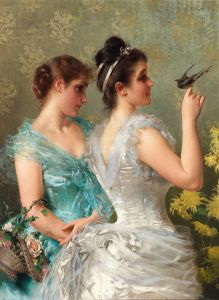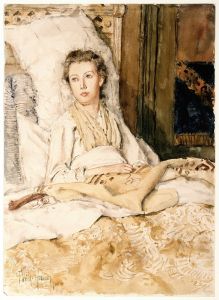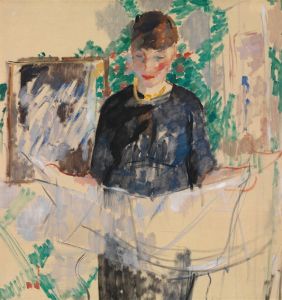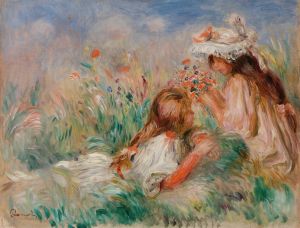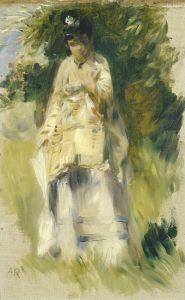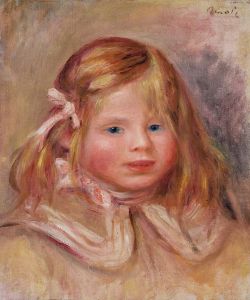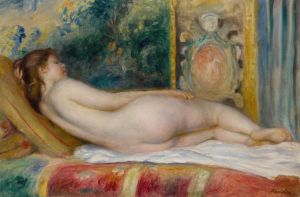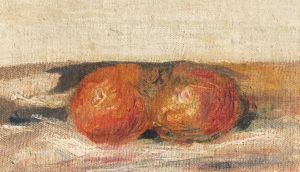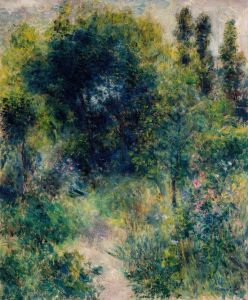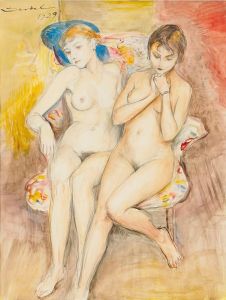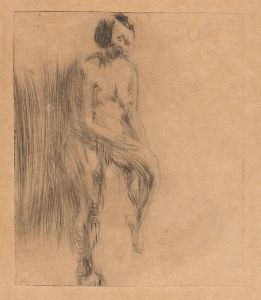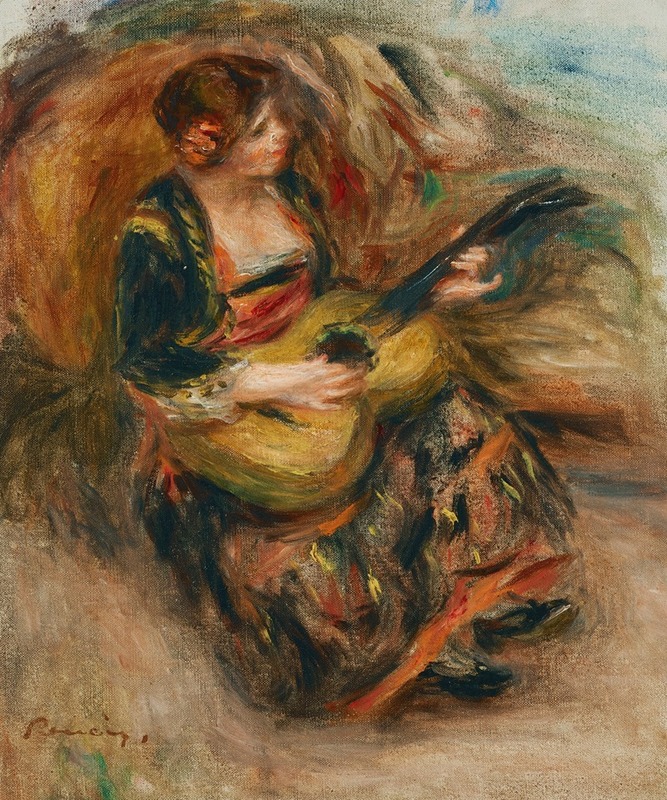
Jeune femme assise jouant de la guitare
A hand-painted replica of Pierre-Auguste Renoir’s masterpiece Jeune femme assise jouant de la guitare, meticulously crafted by professional artists to capture the true essence of the original. Each piece is created with museum-quality canvas and rare mineral pigments, carefully painted by experienced artists with delicate brushstrokes and rich, layered colors to perfectly recreate the texture of the original artwork. Unlike machine-printed reproductions, this hand-painted version brings the painting to life, infused with the artist’s emotions and skill in every stroke. Whether for personal collection or home decoration, it instantly elevates the artistic atmosphere of any space.
"Jeune femme assise jouant de la guitare" is a painting by the renowned French artist Pierre-Auguste Renoir, a leading figure in the Impressionist movement. Renoir, born on February 25, 1841, in Limoges, France, is celebrated for his vibrant light and saturated color, often focusing on people in intimate and candid compositions. His works are known for their beauty, sensuality, and depiction of modern life.
This particular painting, "Jeune femme assise jouant de la guitare," translates to "Young Woman Seated Playing the Guitar." It exemplifies Renoir's skill in capturing the grace and elegance of his subjects, a hallmark of his portraiture. The painting features a young woman seated, engrossed in playing the guitar, a subject that reflects Renoir's interest in music and the leisurely pursuits of the bourgeoisie during the late 19th century.
Renoir's technique in this painting is characteristic of his mature style, where he employs loose brushwork and a vibrant palette to convey the warmth and immediacy of the scene. The use of light is particularly noteworthy, as Renoir masterfully captures the play of light on the woman's face and hands, creating a sense of depth and realism. The background is typically Impressionistic, with soft, blurred forms that suggest a domestic interior without detracting from the central figure.
The subject of a woman playing a musical instrument was a popular theme in 19th-century art, reflecting the cultural milieu of the time, where music was an integral part of social life. Renoir's choice to depict a woman with a guitar also aligns with his frequent exploration of female subjects, capturing their beauty and individuality. The painting is a testament to Renoir's ability to infuse his works with a sense of life and movement, making the viewer feel as though they are witnessing a moment in time.
Renoir's work during this period was heavily influenced by his interactions with other Impressionists, such as Claude Monet, as well as his study of the works of earlier masters like Diego Velázquez and Peter Paul Rubens. These influences are evident in his use of color and light, as well as his focus on capturing the essence of his subjects.
"Jeune femme assise jouant de la guitare" is housed in a private collection, which is common for many of Renoir's works. As with many Impressionist paintings, it is likely that this piece was initially met with mixed reviews, as the Impressionist movement was initially controversial for its departure from traditional artistic techniques and subjects. However, over time, Renoir and his contemporaries gained recognition and acclaim, and today, his works are celebrated worldwide for their contribution to the development of modern art.
Renoir continued to paint until his death on December 3, 1919, leaving behind a legacy of over 4,000 works that continue to captivate audiences with their beauty and insight into the human experience. "Jeune femme assise jouant de la guitare" remains an exemplary piece within his oeuvre, showcasing his mastery of the Impressionist style and his enduring fascination with the interplay of light, color, and human emotion.





